Python
Medium
69
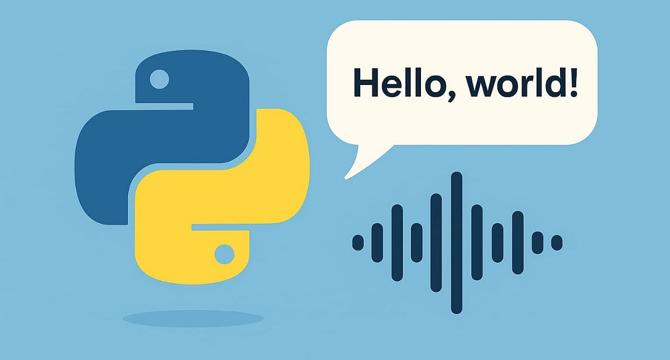
Image Credit: Medium
“️ Give Your Python Code a Voice: A Beginner’s Guide to pyttsx3"
- pyttsx3 is a Python library for offline text-to-speech conversion.
- It offers more control over voice properties like rate, volume, and gender compared to online tools.
- It is cross-platform and suitable for both beginners and advanced users.
- Installation is straightforward, but on Windows, 'pypiwin32' might be needed for smooth operation.
- A simple script example is shown to make text speak using pyttsx3.
- Customization options include changing voice (male to female), speech rate, and volume.
- Switching voices involves accessing and setting the 'voices' property.
- The speech rate can be adjusted using the 'rate' property.
- Volume levels can be set between 0.0 (lower) to 1.0 (louder).
- An example of creating and saving an audio file using pyttsx3 is provided.
- This tool allows for adding voice to Python projects without relying on the cloud.
- It simplifies making Python code more expressive and versatile.
- Python scripts can be programmed to provide spoken feedback.
- Overall, pyttsx3 is user-friendly and powerful for integrating speech capabilities.
- It is recommended for tasks like automation, accessibility, and enhancing code expressiveness.
Read Full Article
4 Likes
Medium
113

Build a RAG Knowledge Assistant with Python Easily
- Retrieval-Augmented Generation (RAG) integrates information retrieval and text generation, leveraging external knowledge for real-time response generation.
- RAG outperforms traditional language models by accessing up-to-date information, making it valuable in customer service, enterprise systems, and academic research.
- Python is preferred for building RAG-based assistants due to its versatility and rich library ecosystem supporting natural language processing tools like Hugging Face Transformers and FAISS.
- Training in Python and AI courses, like the ones offered in Delhi, enhances skills for building RAG assistants.
- The RAG pipeline involves data ingestion, embedding/indexing, and response generation using generative language models.
- Agentic AI, combining RAG with autonomous capabilities, enables AI systems to act independently based on user queries.
- Optimizing embeddings, knowledge base quality, and model prompts are crucial steps to address challenges like latency and contextual integrity in RAG systems.
- AI training programs in Delhi emphasize troubleshooting deployment issues and scaling AI systems efficiently.
- Delhi has become a leading AI education hub offering immersive courses tailored to industry needs, providing a strong foundation for AI careers.
- Joining an AI institute in Delhi ensures exposure to high-quality faculty, laboratories, and networking opportunities.
- Enrolling in specialized AI courses with hands-on projects, mentorship, and focus on cutting-edge topics like RAG can enhance career prospects in AI.
- The demand for intelligent assistants capable of real-time knowledge access is increasing, positioning RAG-based assistants as valuable assets.
- Artificial intelligence training in Delhi equips individuals with skills in building agentic AI models and understanding retrieval and generation principles.
- Mastering RAG, Python, and AI principles through hands-on training paves the way for a successful career in the AI field.
- Delhi's AI education landscape offers transformative learning experiences for individuals aspiring to excel in AI technology.
Read Full Article
6 Likes
Javacodegeeks
64

Image Credit: Javacodegeeks
[FREE EBOOKS] The Chief AI Officer’s Handbook, Natural Language Processing with Python & Four More Best Selling Titles
- The Chief AI Officer’s Handbook provides strategies for AI leadership, innovation, and business growth, offering insights for CAIO roles and transforming organizations with AI.
- Natural Language Processing with Python is a comprehensive guide to mastering NLP with Python, covering foundational concepts, advanced techniques, and real-world applications.
- Essential explores distributed teams, generative AI, and human-powered leadership, highlighting the need for transformative management practices in a changing business landscape.
- AI for Social Good focuses on the potential of AI to impact society positively, offering insights on AI tools, challenges, and ethical considerations for creating impactful solutions.
- Microsoft 365 Copilot At Work delves into leveraging AI tool Copilot for enhanced productivity within Microsoft applications, providing strategies for integration and implementation.
- Excel Quick and Easy offers a convenient reference for Excel users at any skill level, covering essential tasks, functions, and data manipulation techniques for improved proficiency.
Read Full Article
3 Likes
Medium
161

Image Credit: Medium
Python Loops Made Simple: Your Complete Guide to For and While Loops
- Loops in Python are essential programming constructs that allow you to repeat a block of code efficiently.
- For loops are commonly used when the number of iterations is known or when iterating through a collection.
- The basic structure of a Python for loop involves iterating over a sequence, such as a range of numbers.
- The range() function is useful for generating sequences of numbers to be used in for loops.
- While loops are used when the number of iterations is uncertain, depending on a specific condition.
- For loops are recommended when the number of iterations is known, while while loops are suitable for indefinite looping.
- Python provides keywords like break and continue for better control within loops.
- Nested loops, placing loops within loops, are useful but can increase complexity if not used judiciously.
- Common beginner mistakes in loops include improper indentation and not updating loop control variables.
- Loops find practical application in various real-world scenarios like data processing and game development.
- Tips to improve loop efficiency include minimizing repeated calculations inside loops and optimizing loop structures.
- Practice is key to mastering loops, starting from simple examples to progressively more complex implementations.
- Creating projects like a guessing game, password validator, or calculator can enhance loop understanding and coding skills.
- Continuous learning through programming tutorials and staying updated on Python trends is crucial for skill enhancement.
- Regular practice, patience, and exploration are essential to becoming proficient in loop implementation and Python programming.
Read Full Article
9 Likes
Discover more
Dev
243

Image Credit: Dev
I Built My Own Programming Language and its Virtual Machine In Python!
- The article discusses the author's journey of building their own programming language called Pyle and its virtual machine in Python.
- Pyle serves as an educational project to understand the inner workings of programming languages and how text translates into computer instructions.
- The article describes the stages involved in the language processing pipeline from lexer to parser, compiler, and stack-based virtual machine (VM).
- Pyle can handle variables, numbers, strings, arrays, arithmetic, logical, comparison operations, loops, function definitions, and even importing Python modules.
- A showcase example in JavaScript syntax demonstrates creating a function to check for prime numbers and using the importpy function to get a random number for testing.
- Building Pyle has provided the author with a deeper understanding of compilers and virtual machines, enhancing their appreciation for programming tools.
- The article concludes by encouraging readers to explore such projects for a better understanding of programming concepts, with the Pyle project available on GitHub.
Read Full Article
14 Likes
Dronevideos
297

Image Credit: Dronevideos
Florida Uses Drones to Fight Back Against Python Invasion
- Burmese pythons, native to Southeast Asia, have become an invasive species in Florida, impacting the ecosystem.
- The pythons were introduced to Florida through pet trade and accidental releases, leading to a thriving population in the Everglades.
- As apex predators, Burmese pythons have caused declines in native species, disrupting the Everglades' natural balance.
- Florida banned the importation of Burmese pythons in 2012 and has since engaged in eradication programs.
- The annual Florida Python Challenge encourages hunters to capture pythons, with the 2022 challenge setting a record.
- Using thermal imaging drones in python detection has proven effective in locating camouflaged snakes.
- Legislation in 2020 allowed broader drone use to track pythons in the Everglades, enhancing conservation efforts.
- Partnerships between wildlife agencies, researchers, and drone technology have led to successful python tracking and removal.
- Combining drone and radio tracking technology has resulted in the largest python haul on record in Florida.
- The strategy aims to reduce the python population and restore native animal populations in the affected areas.
Read Full Article
17 Likes
RealPython
15
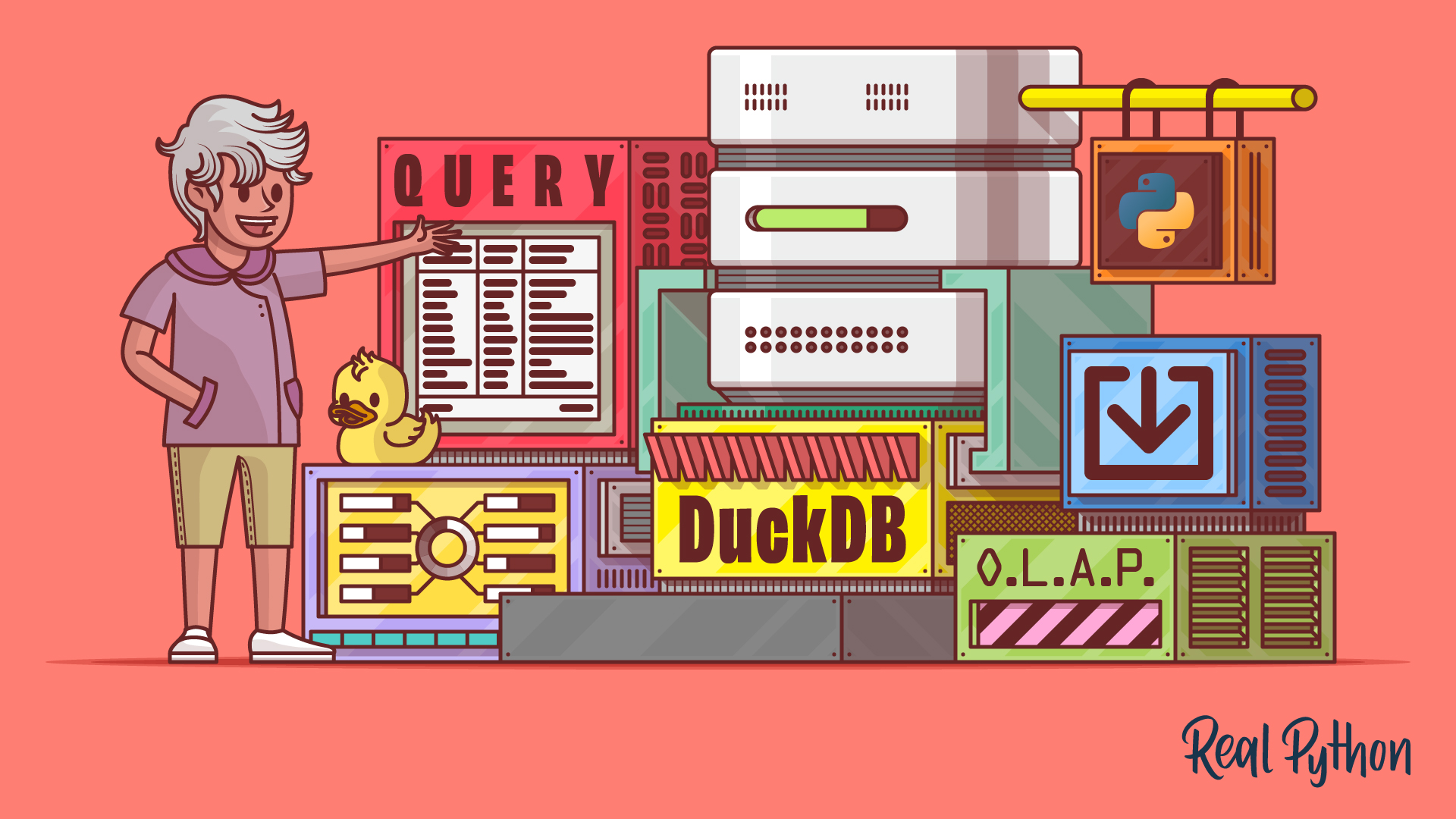
Image Credit: RealPython
Starting With DuckDB and Python
- The DuckDB database offers a streamlined way to manage large datasets in Python with OLAP optimization.
- Users can create databases, verify data imports, and execute efficient data queries using SQL and DuckDB's Python API.
- The video course teaches users to create DuckDB databases by importing data from files like Parquet, CSV, or JSON and storing it in a table.
- Querying a DuckDB database in Python involves utilizing standard SQL syntax through a DuckDB connection object.
- DuckDB's Python API enables method chaining for an object-oriented approach to database queries.
- Concurrent access in DuckDB allows multiple reads while limiting concurrent writes to uphold data integrity.
- DuckDB seamlessly integrates with pandas and Polars by transforming query results into DataFrames using the .df() or .pl() methods.
Read Full Article
Like
Dev
45

Image Credit: Dev
Writing Your First Automated Test Using Python (unittest Framework)
- Python's unittest framework is a good starting point for testing journeys, as it comes bundled with Python and is an industry standard.
- unittest is a unit testing framework in Python standard library, following the xUnit style, used for writing test cases as classes and using special methods for test context.
- The article presents a step-by-step guide to building your first Python test, starting with creating a function to be tested and writing test cases using assertions.
- Testing for exceptions using methods like assertRaises( ) is highlighted, emphasizing the importance of handling edge cases in real projects.
- Maintaining scalability in test projects involves organizing the structure effectively, separating production code from test files for easy management.
- The usage of setUp() and tearDown() methods for managing test context is explained, ensuring tests run independently and cleanly.
- Running tests using verbose mode (-v flag) provides more detailed output, beneficial when dealing with numerous test cases.
- The article outlines when to use unittest versus Pytest, highlighting the significance of thinking like a tester while mastering unittest syntax.
- Mastering unittest is crucial for Python developers to write clean, testable, and production-ready code, instilling confidence in test automation processes.
Read Full Article
2 Likes
Dev
176

Image Credit: Dev
🌋 Find All K-Distant Indices in an Array – LeetCode 2200 (C++ | Python | JavaScript)
- LeetCode problem 2200 involves finding all k-distant indices in an array, where an index i is considered k-distant if there is at least one index j such that |i - j| <= k and nums[j] == key.
- The efficient solution for this problem involves a greedy strategy using pointers, where for each index j where nums[j] == key, all indices i within [j - k, j + k] are added to the result set, covering all valid i within the distance k from the key position.
- The C++, JavaScript, and Python solutions provided linearly process the array, ensuring old indices are not rechecked, resulting in a time complexity of O(n) and space complexity of O(1) apart from the output.
Read Full Article
10 Likes
Medium
7
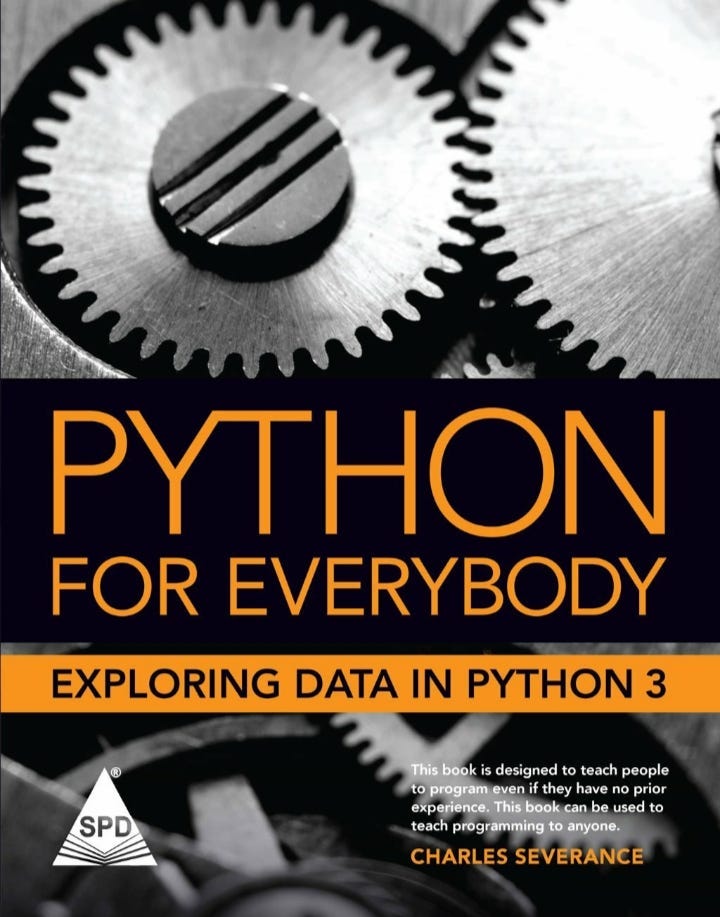
Image Credit: Medium
Python for Everybody — Learn Programming With Zero Experience
- Python for Everybody is a beginner-friendly course designed for absolute beginners with no prior coding experience or technical knowledge.
- The course covers Python fundamentals like variables, loops, conditions, functions, and file handling which serve as the foundation of coding.
- The specialization consists of 5 courses and typically takes 3–6 months to complete, offering flexibility to study at your own pace.
- Upon completion, learners can be prepared for entry-level roles such as Python Developer, Data Analyst, or Web Scraper.
- The course includes videos, quizzes, and coding exercises to reinforce learning and understanding.
- The Capstone Project involves building an actual application to practice collecting, processing, and visualizing data.
- The course taught by Dr. Charles Severance (Dr. Chuck) from the University of Michigan covers Python, JSON, XML, REST APIs, SQLite, and Web Scraping.
- The course is conducted in English with subtitles available in multiple languages to cater to learners worldwide.
- The course is fully online, accessible worldwide, and can be accessed using the Coursera mobile app for on-the-go learning.
- Enrollment is open to anyone, regardless of educational background, and the course costs around $49/month with a 7-day free trial.
- The program encourages a hands-on approach, allowing learners to interact with real web data, build apps, and solve practical problems.
- Assistance is available through Coursera’s forums, discussion boards, and peer community to support learners on their journey.
- Flexible pacing options allow learners to study at their own speed, with quizzes and coding assignments provided to test skills.
- Offered by the University of Michigan, the course provides world-class learning at an affordable price, attracting over 1.7 million learners.
- Dr. Chuck's engaging teaching style and real-world examples make learning Python fun and effective for beginners.
- Python for Everybody offers a gateway into the world of programming, equipping learners with skills essential for entry-level tech roles.
Read Full Article
Like
Dev
334

Image Credit: Dev
Day 1/100: Why Learn Python in 2025?
- Python remains relevant and powerful in 2025, catering to various industries and technologies.
- Reasons to learn Python include its easy-to-learn syntax and widespread career opportunities across different sectors.
- Python is prominent in AI, ML, data science, and offers libraries like TensorFlow and PyTorch for such applications.
- Frameworks like Flask, Django, and FastAPI make web development and API creation seamless with Python.
- Python simplifies automation of tasks and enjoys massive community support for problem-solving.
- The Python Package Index offers a vast library selection, enabling faster development by utilizing existing packages.
- Python's continuous improvement in performance and features like static typing ensures its future-proof nature.
Read Full Article
20 Likes
RealPython
167
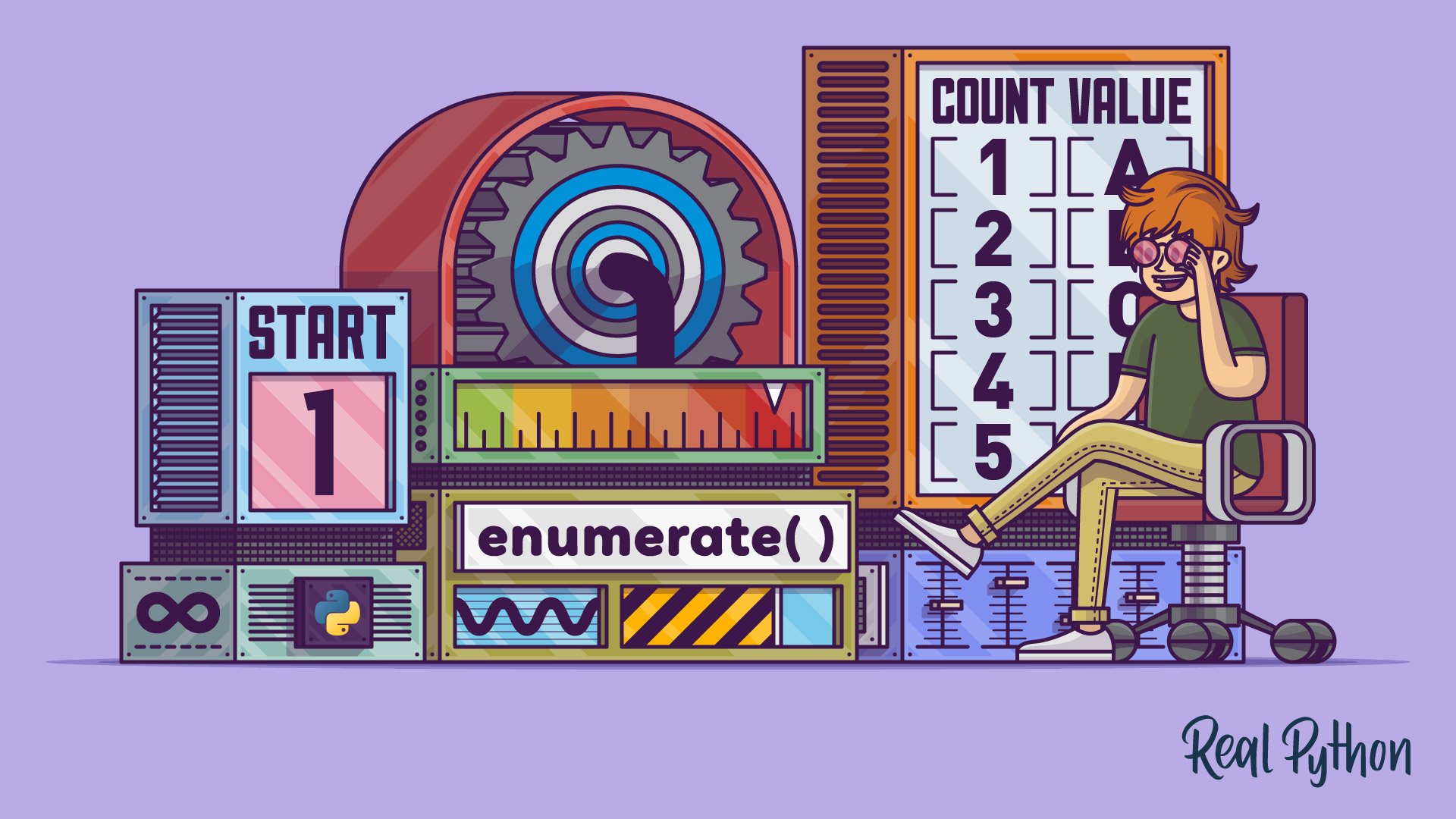
Image Credit: RealPython
Python enumerate(): Simplify Loops That Need Counters
- Python's enumerate() function simplifies loops by adding a counter to each item in an iterable.
- It pairs each item with an index, providing both index and value while iterating.
- enumerate() accepts an optional start argument to customize the initial index value.
- The function eliminates the need for manual counter management in loops.
- You can use enumerate(), zip(), or slicing for iterating multiple sequences or selecting elements.
- The tutorial covers implementing custom enumerations, as well as alternative methods like zip() and itertools.
- Python's enumerate() works directly in loops, offering index-value pairs from iterables.
- It is considered more Pythonic than using range(len()) for both index and value retrieval.
- You can easily unpack enumerations to access the count and value of each item.
- The start argument in enumerate() allows customization of the initial count value.
- The article provides practical examples and guides on effectively using Python's enumerate().
Read Full Article
10 Likes
Dev
223

Image Credit: Dev
Mastering URL Routing in a Lightweight Python Web Framework
- Routing is crucial in a web framework to map requests to handler functions efficiently.
- Key functions of routing include pattern matching, parameter extraction, dispatch, and fallback.
- A minimal system can handle routing effectively in a few lines of Python code.
- Routes can be defined declaratively using decorators like @app.get('/users').
- Route patterns can be parsed into regular expressions for fast matching.
- Organizing the route table can be done using an ordered list or a method-keyed dict of regex trees.
- Matching and dispatching involve iterating through routes to find a match and invoking the appropriate handler.
- Route precedence, trailing slash policy, and HTTP method override are important considerations.
- Designing routes to be middleware-friendly can enhance functionality.
- Performance tips include pre-compiling regexes and caching handler lookups.
- Further steps can involve adding sub-routers, versioning, and web-socket endpoints.
- Implementing a thoughtful routing system is crucial for developer experience and runtime efficiency.
- Advanced users can explore a detailed guide on building a lightweight Python web framework from scratch.
Read Full Article
13 Likes
Medium
278

Why Understanding Try-Except in Python is Essential for Every Programmer
- Try-except block in Python is crucial for handling errors that may occur during program execution.
- It helps in preventing unexpected crashes, especially when dealing with user input that can be unpredictable.
- The try block contains the code that might raise an error, while the except block specifies what to do if an error occurs.
- Additional keywords like else and finally can also be combined with try-except for more robust error handling.
- Using try-except allows programs to handle various types of errors, such as ValueErrors, without halting execution.
- Properly handling errors ensures smooth program execution and minimizes unexpected crashes.
- While try-except is beneficial, it's important to be cautious about its usage, such as catching specific errors and providing helpful messages to users.
- Avoid using a general except block and ensure that try-except is applied judiciously in areas where errors are likely to occur.
- By utilizing try-except along with effective error handling practices, Python programs can become more robust and user-friendly.
Read Full Article
16 Likes
Medium
259
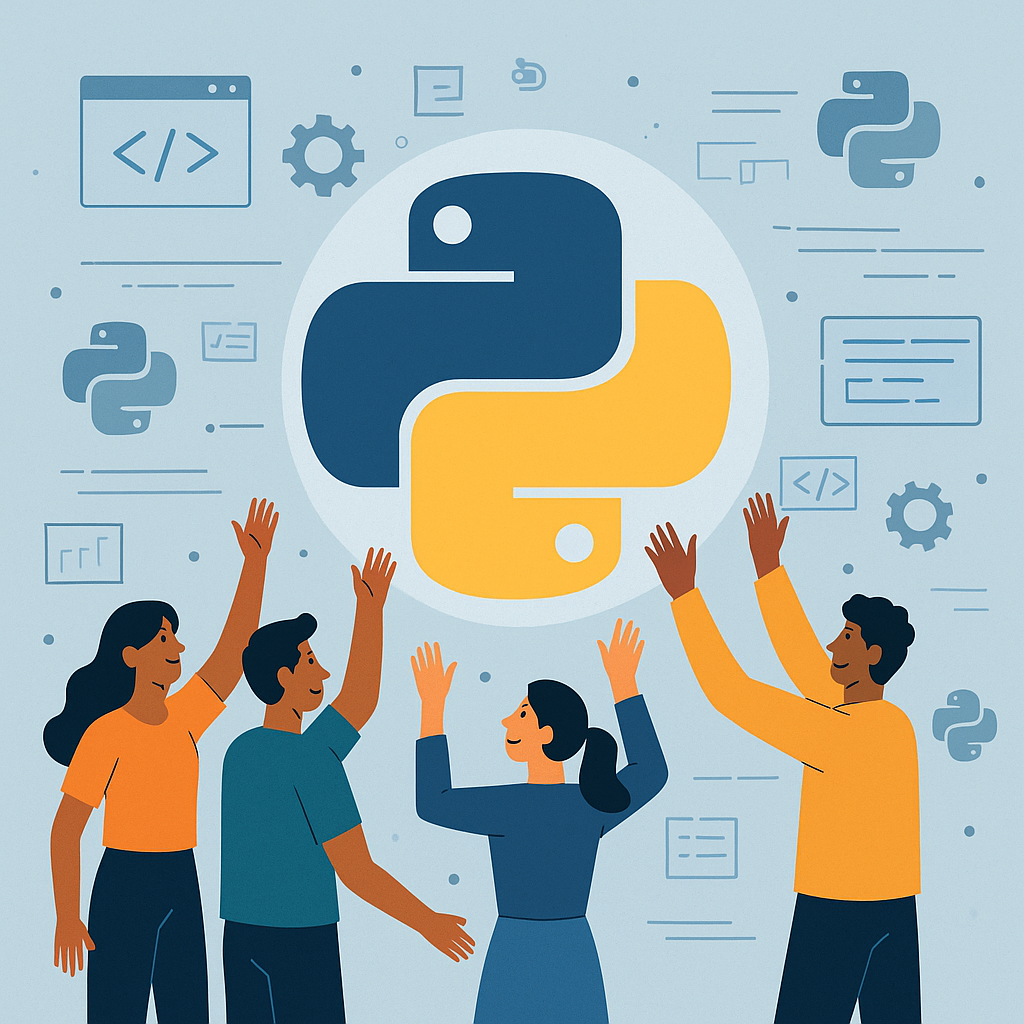
Image Credit: Medium
Why Python Rules the Programming World in 2025
- Python dominates many areas of software development due to its high-level and interpreted nature.
- Python strikes a balance between simplicity and power, making it popular.
- Key Points:
- 1. Python is beginner-friendly with a simple learning curve and clear syntax.
- 2. It boasts a massive community and abundant learning resources.
- 3. Python is versatile and applicable across various industries for different tasks.
- 4. Python is crucial for the future of tech, particularly in AI, data science, and automation.
- Python's rise is strategic, aligning with the evolving tech landscape.
- Its design and practical power make it a top choice for students, startups, and tech giants.
- Python offers a gentle start for beginners while supporting advanced development in AI, backend APIs, and automation.
- In 2025, Python remains a valuable tool for developers at all levels.
- Python's trajectory is an intentional result of its design, community, and practical utility.
- Whether for building websites, AI projects, or automating tasks, Python grows along with developers.
- Python is positioned as not just a first language, but an essential tool for modern developers.
Read Full Article
10 Likes
For uninterrupted reading, download the app